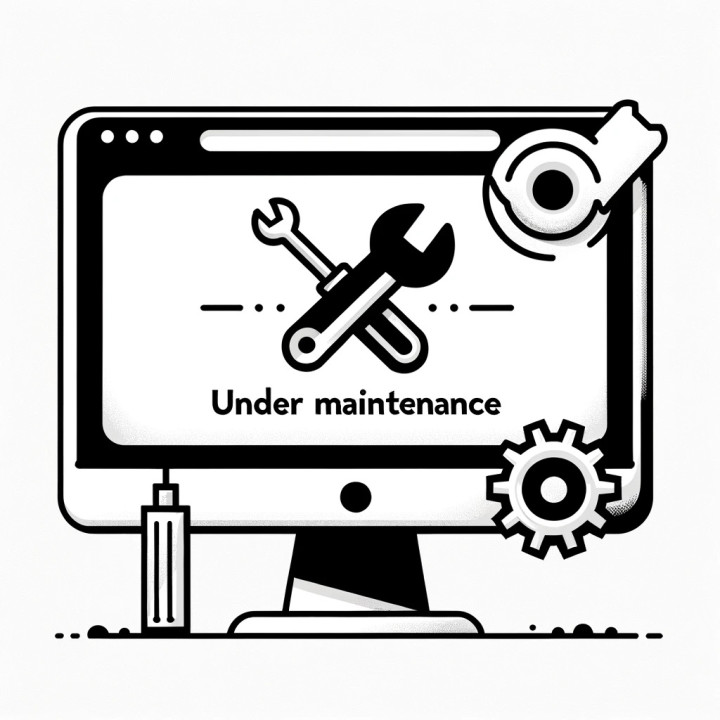8 reasons why it's so important to maintain your eCommerce website
In the bustling landscape of eCommerce, where online shopping is becoming increasingly popular, your eCommerce website is essentially your digital storefront. However, merely setting up an eCommerce website is just the beginning. To stay competitive and ensure consistent growth, regular and comprehensive maintenance is indispensable.
Maintaining an online store's functionality and efficiency is paramount. A well-maintained eCommerce website not only enhances user experience but also helps drive sales and foster customer loyalty.
Our software developers play a crucial role in ensuring the seamless maintenance of an eCommerce website.
1. Security and compliance:
a. Protection Against Cyber Threats:
- Globally, there is a dramatic number of cyber threats, and your eCommerce site is not immune. Maintenance involves keeping software, plugins, and security features up to date, significantly reducing the risk of data breaches and ensuring the protection of sensitive customer information
b. Compatibility:
- New software versions often include improved features and security patches. By keeping the eCommerce software and plugins current, you ensure compatibility with the latest technologies and industry standards.
c. Security Updates:
- In a data-conscious world, data privacy is a significant concern. Regular maintenance helps you stay compliant with GDPR regulations by continuously monitoring and securing customer data. Regularly update security features and protocols to protect customer data and maintain compliance with data protection regulations..
d, Penetration Testing:
- Conduct regular security assessments, including penetration testing, to identify vulnerabilities and address them promptly.

2. Optimal User Experience
a. Performance Enhancement:
- Maintaining an exceptional user experience is paramount. Regular checks and updates can address issues like slow loading pages, bottlenecks, broken links, or dysfunctional features. Ensuring smooth navigation and a seamless checkout process are crucial for keeping customers satisfied. Tools like Google Page Speed Insights can provide valuable insights.
b. Accessibility:
- Every country has accessibility regulations that are stringent, and non-compliance can lead to legal consequences. Regular maintenance ensures that your website remains accessible to all, including those with disabilities, conforming to the Web Content Accessibility Guidelines (WCAG).
- Implement performance optimisation techniques such as image compression, browser caching, and code minification to improve page load times and user experience.
3. Data Backup and Recovery:
a. Regular Backups:
- Establish a robust backup system to safeguard critical data. Regularly schedule backups to ensure that in the event of a data loss or website crash, you can quickly restore your eCommerce site to its previous state.
b. Testing Backups:
- Regularly test the backup and recovery process to ensure that it functions as expected. This practice helps identify any potential issues before they become critical.
4. Content Management and SEO:
a. Content Updates:
- Ensure that product descriptions, images, prices, and availability are regularly updated. Fresh and accurate content enhances user experience, ensuring your site remains relevant and engaging whilst boosting search engine rankings.
b. SEO Maintenance:
- Monitor and optimise SEO elements such as meta tags, alt attributes, and schema markup, all of which play a vital role in search engine ranking.
Regular SEO audits and keyword research help maintain and improve your website's search engine visibility.
- Mobile-friendly websites also tend to perform better in mobile search results, and maintenance efforts can enhance your mobile SEO, attracting a larger share of mobile traffic.
 5. Content Freshness and Relevance
5. Content Freshness and Relevance
a. Product Catalogue:
- Your product catalogue may evolve with time. Maintenance allows you to add new products, remove outdated ones, and update descriptions and pricing. This not only keeps your inventory accurate but also appeals to potential customers.
b. Blogs and Articles:
- If you maintain a blog or publish articles, regular updates showcase your industry expertise and demonstrate your commitment to providing valuable information to your audience, thus improving customer trust and retention.
6. Mobile Responsiveness:
a. Mobile-Friendly Design:
- Given the increasing use of mobile devices for online shopping, ensure that your eCommerce site is mobile-responsive. Test your website's functionality and design on various mobile devices and screen sizes. Regular maintenance checks and updates can adapt your website to various screen sizes and devices, delivering an optimal user experience for mobile shoppers.
b. Cross-Browser Compatibility:
- Verify that your eCommerce website functions correctly on different web browsers, including Chrome, Firefox, Safari, and Edge. Address any cross-browser compatibility issues promptly, ensuring that your website is mobile-responsive is crucial
DID YOU KNOW
Ecommerce purchases made via smartphone have overtaken those made via tablets, with online sales made via smartphone representing well over 2/3 of all ecommerce sales. (trade.gov)
7. User Testing and Feedback:
a. Usability Testing:
- Regularly conduct usability testing to identify user experience issues. Gather feedback from actual users to make informed improvements to your website's design and functionality.
b. Customer Support Integration:
- Integrate customer support channels such as live chat or email for prompt assistance. Monitor customer inquiries and feedback to address issues quickly.
8. Analytics and Reporting:
a. Data Analysis:
- Utilise analytics tools like Google Analytics to track user behaviour, conversion rates, and sales trends. Analyse data to make informed decisions and implement improvements.
b. Regular Reporting:
- Generate regular reports on website performance, including traffic sources, page views, and conversion rates. Share these reports with stakeholders to keep them informed.
In conclusion, eCommerce website maintenance is not a one-time task but a continuous investment in the success of your online business.
It is about providing an impeccable user experience, ensuring data security and compliance, optimising SEO performance, keeping content fresh and relevant, and catering to the growing mobile audience.
Neglecting maintenance can lead to a decline in customer trust, a loss of revenue, and potential legal issues. Therefore, a dedicated commitment to regular upkeep is a strategic choice for any eCommerce business looking to thrive in the competitive online marketplace.
At Bespoke we offer affordable monthly maintenance packages, ensuring eCommerce website maintenance with a multifaceted approach.
Regular updates, performance optimisation, security measures, content management, and user feedback are all integral parts of maintaining a successful eCommerce website and we can contribute significantly to the longevity and success of your eCommerce platform, ultimately enhancing the customer experience and driving business growth.

Mailchimp Alternatives Guide 2025
Is Mailchimp still the best FOR EMAIL MARKETING? Or are UK businesses find...
5 min read

The Hidden Cost of Poor System Integration
Why Poor Integration Between Systems Is Holding Your Business Back And How...
8 min read

Admin Overload: The Silent Business Killer
The cost of manual, repetitive admin tasks In countless small and medium-s...
3 min read


